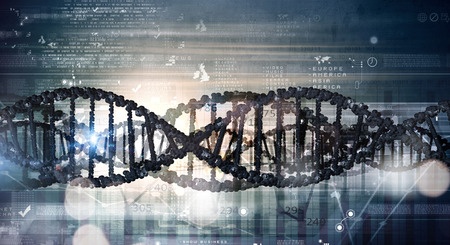DNA: Nature’s Inspiration for Memory

Information Storage and Retrieval: Unraveling the Double Helix
The double helix DNA structure, discovered by Watson and Crick in 1953, contains and efficiently processes an unfathomable amount of information.
 Many have attempted to illustrate the magnitude of data, but no one really knows.
Many have attempted to illustrate the magnitude of data, but no one really knows.
DNArefutesevolution.com states that a single molecule of DNA contains enough information to fill a million page encyclopedia or four 23 volume sets of Encylopaedia Briticanna.
Qz.com reports:
One gram of DNA can potentially hold up to 455 exabytes of data, according to the New Scientist. For reference: There are one billion gigabytes in an exabyte, and 1,000 exabytes in a zettabyte. The cloud computing company EMC estimated that there were 1.8 zettabytes of data in the world in 2011, which means we would need only about 4 grams (about a teaspoon) of DNA to hold everything from Plato through the complete works of Shakespeare to Beyonce’s latest album (not to mention every photo ever posted on Instagram).
Scientists from around the world have been working for years to duplicate the mechanism by which information is stored and retrieved from this double helix structure.
Recently,
Robert Grass and colleagues of the Swiss Federal Institute of Technology (ETH) in Zurich said they have pioneered a process of encapsulated DNA in glass that is equivalent to creating a fossilized form of data storage.
They have also developed a mathematical algorithm normally used in long-distance radio transmissions to eliminate any errors when deciphering the data written in the digital genetic code of DNA.
“We will show how we can use modern chemical and information engineering tools for the safeguarding of actual digital information in the form of DNA,” the researchers told the American Chemical Society in Boston.
Single DNA Molecule Could Store Information For One Million Years
While data in today’s storage devices are processed and stored with ‘ones’ and ‘zeros’ or ‘on’ and ‘off’ switches, DNA encodes using four nucleotide components: (A)denine, (C)ytosine, (T)hymine, and (G)uanine.
We are many years or even decades away from a cost effective way of storing (for hundreds, thousands, or millions of years vs today’s decades) and retrieving data from a DNA like double helix structure storage device.
Given all the data in the world can be stored in large spoon in a double helix structure and be retained without breaking down under the right environment, it is well worth the pursuit.
What is the immediate application to brain performance readers?
The human brain is much greater than any binary device in existence, and we need to take advantage of the additional tools we have at our fingertips to store, process, and retrieve information. By using some or all of our senses (smell, sight, sound, touch, and taste) along with imagination; we build connections that are retrievable and secure. Once again, nature provides inspiration for memory.
Additional Resources
Nature: DNA Encodes Biological Information


